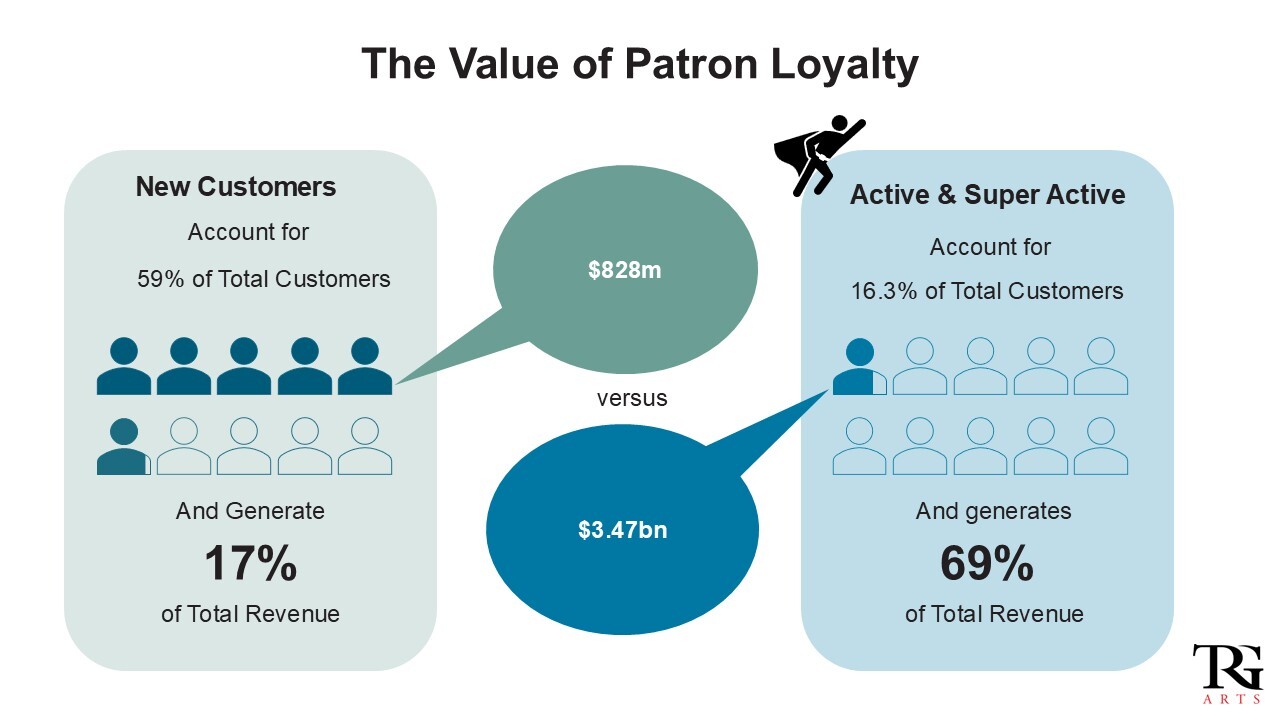Across the arts and cultural sector, there’s a common refrain: “We need more new audiences.” But data tells a different story. In most organizations, 80% of customer databases have no future booking.
That means the majority of patrons and customers you already know (people who’ve shown up, bought tickets, and cared about your work) simply haven’t planned a return.
We don’t really have a demand problem.
We have a frequency problem.
Why We Should Care About Recurring Revenue?
Because it’s the only kind of income you can truly count on.
Arts organizations live in a cycle of peaks and valleys (one good season, one shaky one) constantly rebuilding revenue and audiences from scratch. Recurring revenue breaks that pattern. It replaces one-off transactions with predictable, renewable relationships that compound over time.
When audiences come back more often, their value grows: they spend more, stay longer, and are far likelier to become members or donors. That steady rhythm of return doesn’t just stabilize cash flow; it powers artistic risk, confident planning, and long-term impact. In a sector that survives on uncertainty, recurring revenue creates the confidence to lead boldly.
The Data Behind Frequency and Loyalty
When we talk about frequency, we’re really talking about value; not just cultural value, but financial value.
Take a look at The Value of Patron Loyalty, drawn from TRG Arts’ aggregated data across hundreds of cultural organizations in the Arts & Culture Benchmark:

New customers account for nearly 60% of total audiences, yet generate only 17% of total revenue. Meanwhile, just 16% of loyal, repeat patrons generate almost 70% of total income.
That’s the compounding effect of frequency. A smaller, more engaged base contributes exponentially more; because they’re not just attending once, they’re investing repeatedly. Every time they return, they strengthen the financial backbone of the organization.
The Loyalty Effect in Action
The same pattern shows up at the organizational level.
 Here’s what happens when this organization moved audiences from single-ticket buyers to repeat, renewing patrons:
Here’s what happens when this organization moved audiences from single-ticket buyers to repeat, renewing patrons:
- A single-ticket buyer yields about $53 per year, with a cost per sale (20%) and low renewal likelihood (23%).
- A new subscriber triples that yield but still carries high acquisition cost (25%) and modest renewal (46%).
- A renewing subscriber yields $341 - over six times more than a single-ticket buyer - at a fraction of the cost (3%).
- A renewing subscriber-donor generates $550 annually, with a renewal rate nearing 90%.
This is the loyalty effect in real numbers: when frequency increases, so does yield, efficiency, and confidence in the future. The organizations that prioritize getting audiences back (not just getting them in) spend less to earn more, with far greater predictability.
Whether you’re in Toronto or Tunbridge Wells, that truth applies. The revenue you can count on next season isn’t from people you haven’t met yet; it’s from the ones who’ve already walked through your doors.
From Recency to Frequency to Resilience
Frequency isn’t about pushing harder for the next sale. It’s about designing experiences and relationships that bring people back naturally, sooner, and more often.
When you focus your teams on return behavior, shortening the recency gap and nurturing repeat visits, you’re not just improving marketing metrics. You’re building resilience.
More often = more loyal. More loyal = more sustainable.
That’s the power of frequency.
Level Up on Loyalty: Watch the Full Episode
Watch or listen to the latest episode of Leading the Way, as the TRG team unpack why frequency, not first-timers, is the engine of recurring revenue, and how organizations everywhere can grow sustainability through loyalty.



.png?width=1280&height=720&name=Episode%206%20-%20Frequency%20(PLay).png)